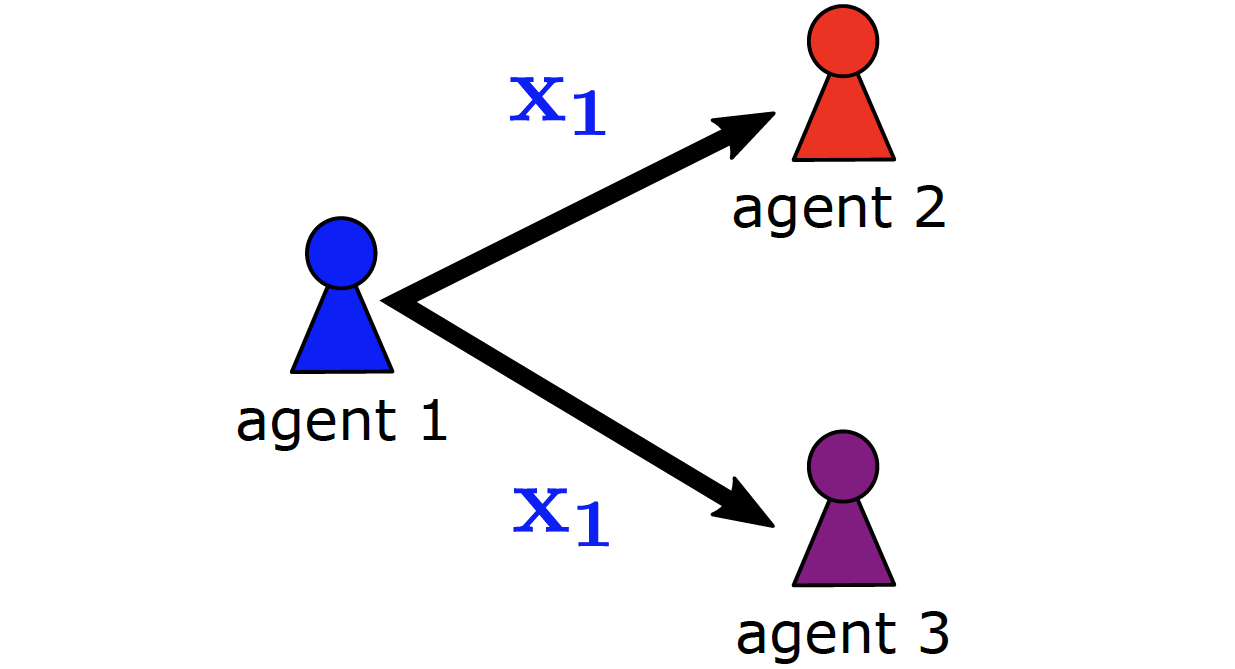Value function factorization (VFF) is a popular approach to cooperative multi-agent reinforcement learning in order to learn local value functions from global rewards. However, state-of-the-art VFF is limited to a handful of agents in most domains. We hypothesize that this is due to the flat factorization scheme, where the VFF operator becomes a performance bottleneck with an increasing number of agents. Therefore, we propose VFF with variable agent sub-teams (VAST). VAST approximates a factorization for sub-teams which can be defined in an arbitrary way and vary over time, e.g., to adapt to different situations. The sub-team values are then linearly decomposed for all sub-team members. Thus, VAST can learn on a more focused and compact input representation of the original VFF operator. We evaluate VAST in three multi-agent domains and show that VAST can significantly outperform state-of-the-art VFF, when the number of agents is sufficiently large.
@inproceedings{ phanNeurIPS21,
author = "Thomy Phan and Fabian Ritz and Lenz Belzner and Philipp Altmann and Thomas Gabor and Claudia Linnhoff-Popien",
title = "VAST: Value Function Factorization with Variable Agent Sub-Teams",
year = "2021",
abstract = "Value function factorization (VFF) is a popular approach to cooperative multi-agent reinforcement learning in order to learn local value functions from global rewards. However, state-of-the-art VFF is limited to a handful of agents in most domains. We hypothesize that this is due to the flat factorization scheme, where the VFF operator becomes a performance bottleneck with an increasing number of agents. Therefore, we propose VFF with variable agent sub-teams (VAST). VAST approximates a factorization for sub-teams which can be defined in an arbitrary way and vary over time, e.g., to adapt to different situations. The sub-team values are then linearly decomposed for all sub-team members. Thus, VAST can learn on a more focused and compact input representation of the original VFF operator. We evaluate VAST in three multi-agent domains and show that VAST can significantly outperform state-of-the-art VFF, when the number of agents is sufficiently large.",
url = "https://openreview.net/forum?id=hyJKKIhfxxT",
eprint = "https://proceedings.neurips.cc/paper/2021/file/c97e7a5153badb6576d8939469f58336-Paper.pdf",
publisher = "Curran Associates, Inc.",
booktitle = "Advances in Neural Information Processing Systems",
pages = "24018--24032",
}
Related Articles
- T. Phan et al., “Spatially Grouped Curriculum Learning for Multi-Agent Path Finding”, AAAI 2026
- T. Phan et al., “Generative Curricula for Multi-Agent Path Finding via Unsupervised and Reinforcement Learning”, JAIR 2025
- T. Phan et al., “Confidence-Based Curriculum Learning for Multi-Agent Path Finding”, AAMAS 2024
- T. Phan et al., “Attention-Based Recurrence for Multi-Agent Reinforcement Learning under Stochastic Partial Observability”, ICML 2023
- T. Phan et al., “Resilient Multi-Agent Reinforcement Learning with Adversarial Value Decomposition”, AAAI 2021
- T. Phan, “Emergence and Resilience in Multi-Agent Reinforcement Learning”, PhD Thesis
Relevant Research Areas

